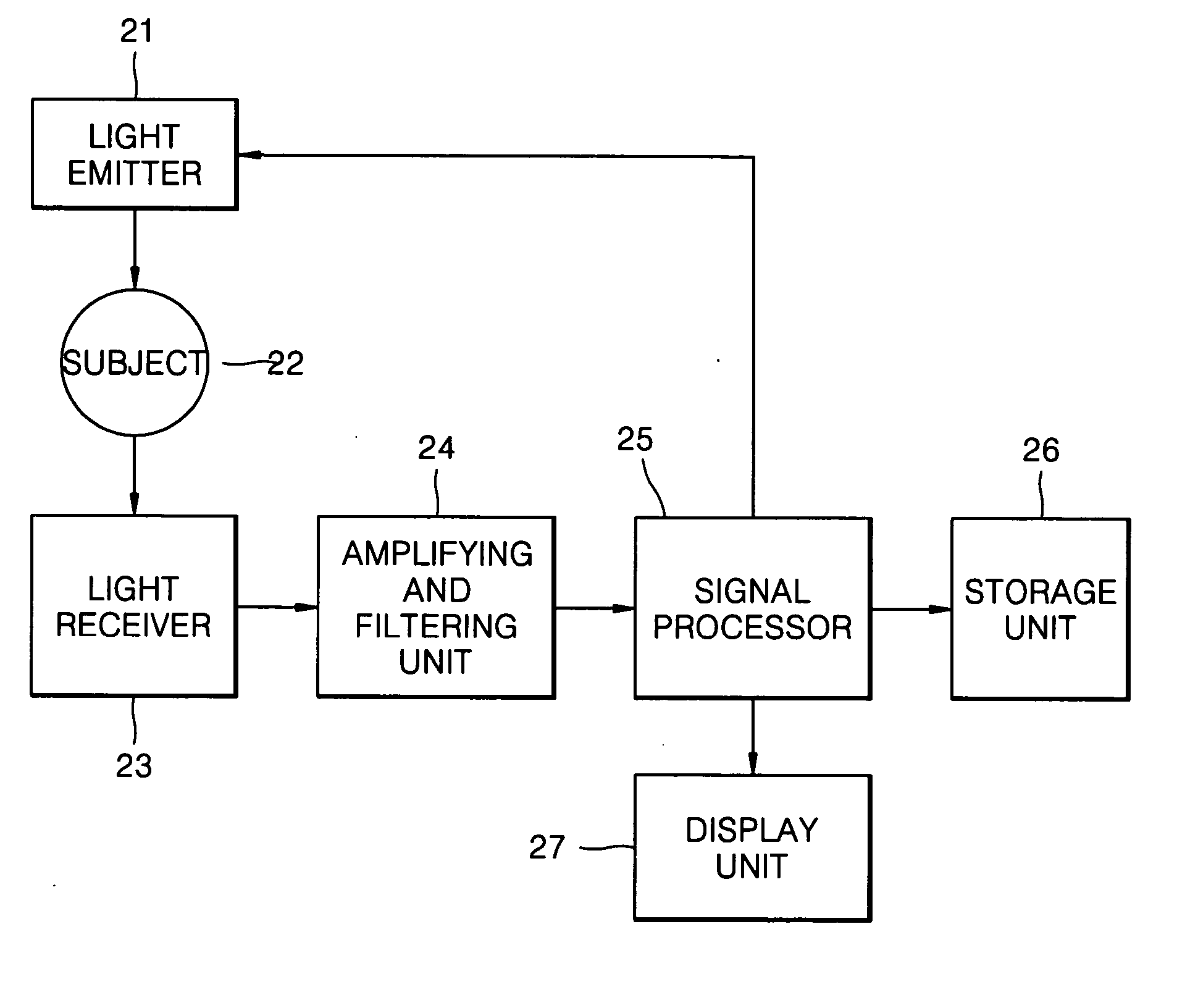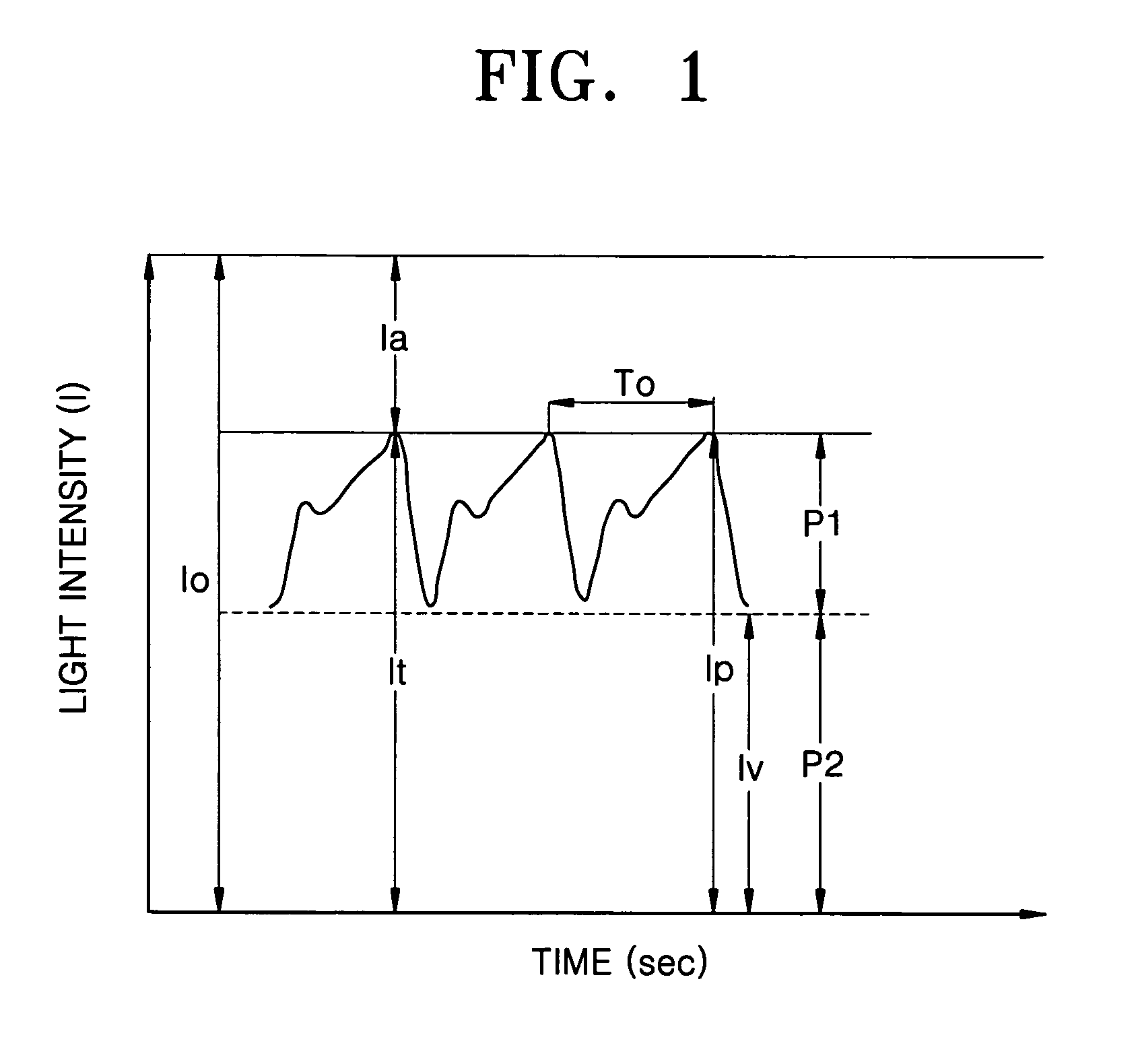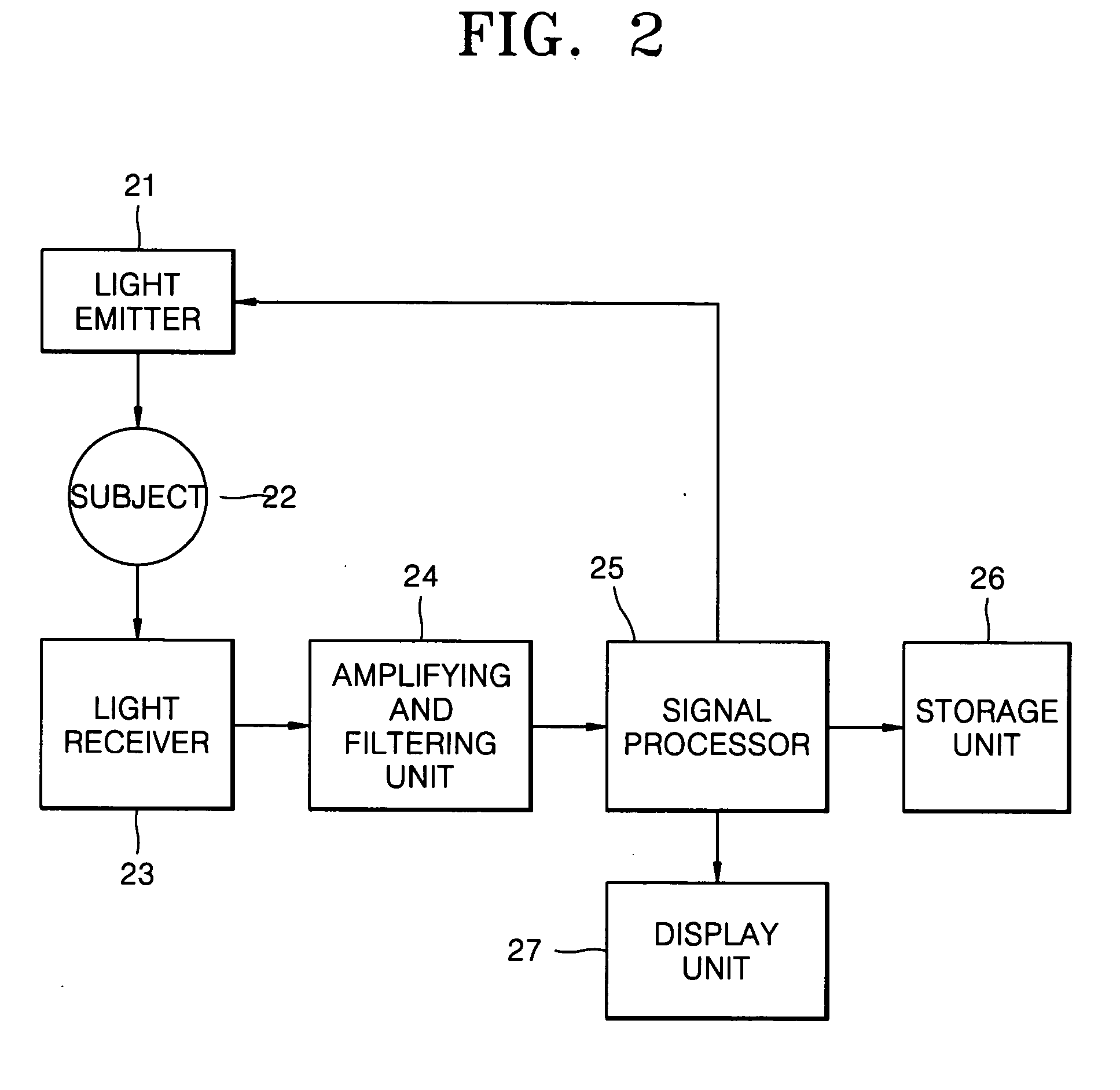Method of removing abnormal data and blood component spectroscopy analysis system employing the same
a technology of abnormal data and analysis system, applied in the field of blood component analysis system, can solve the problems of long measuring time, abnormal data, and errors in the analysis of blood components using spectroscopy
- Summary
- Abstract
- Description
- Claims
- Application Information
AI Technical Summary
Problems solved by technology
Method used
Image
Examples
Embodiment Construction
[0046] In order to obtain quantitative results of a method of removing abnormal data according to an embodiment of the present invention, data was continuously collected for ten (10) minutes from thirty (30) subjects lying on their back and having a hemoglobin concentration of 10.5-16.5 g / dl. The population composed of thirty (30) subjects was divided at a ratio of 2 to 1, and a regressive equation was obtained through multivariate linear regressive analysis having twenty (20) subjects as a calibration model. The regressive equation was applied to the data collected from the remaining ten (10) subjects to calculate the result for a prediction model. Hemoglobin values of all the subjects to be used as references were measured using HemoCue AB (Sweden), an apparatus for invasively measuring hemoglobin using a cuvette.
[0047] In order to determine whether parameters, i.e., RORs between wavelengths, were abnormal data, a standard deviation for a ratio R.sub.13 of a logarithmic ratio with...
PUM
| Property | Measurement | Unit |
|---|---|---|
| wavelength | aaaaa | aaaaa |
| wavelength | aaaaa | aaaaa |
| wavelength | aaaaa | aaaaa |
Abstract
Description
Claims
Application Information
 Login to View More
Login to View More - R&D
- Intellectual Property
- Life Sciences
- Materials
- Tech Scout
- Unparalleled Data Quality
- Higher Quality Content
- 60% Fewer Hallucinations
Browse by: Latest US Patents, China's latest patents, Technical Efficacy Thesaurus, Application Domain, Technology Topic, Popular Technical Reports.
© 2025 PatSnap. All rights reserved.Legal|Privacy policy|Modern Slavery Act Transparency Statement|Sitemap|About US| Contact US: help@patsnap.com



